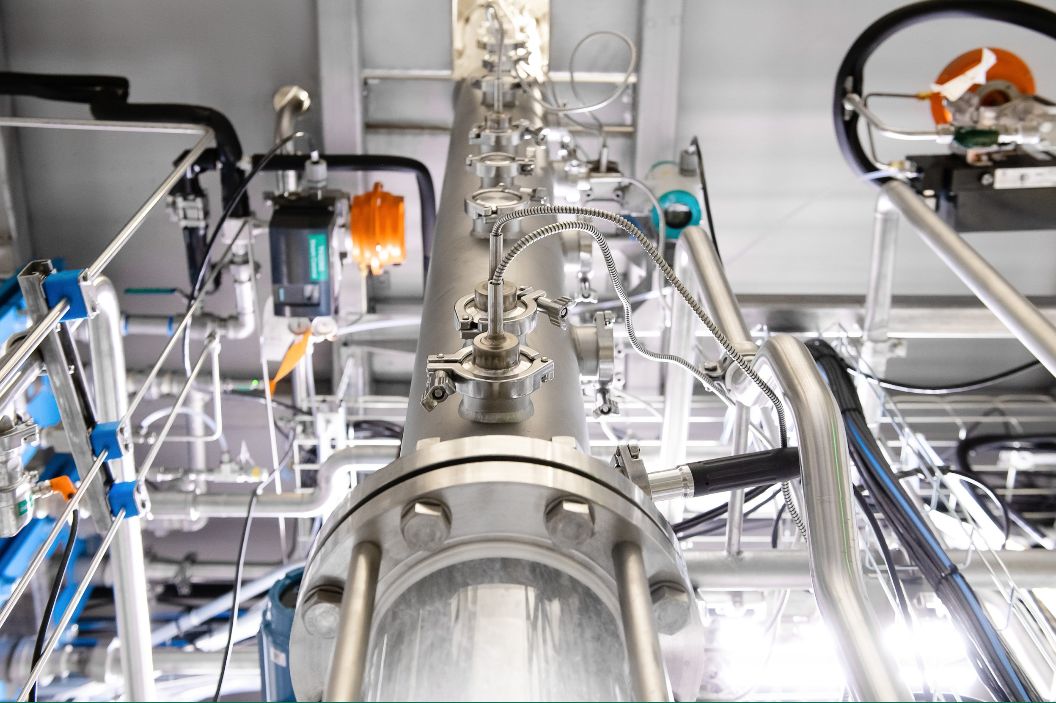LanzaTech, a specialist in converting carbon emissions from industrial processes into ethanol via a continuous microbial fermentation process, is moving into the food and feed arena with a new product set to reach commercial-scale production in 2028: LanzaTech Nutritional Protein (LNP).
The Illinois-based company is best-known for fermenting gases instead of sugars to make ethanol that can be used as a building block to make other products such as PET.
Over the years, however, it has also been exploring whether the nutrient-rich bacteria used in its process can be used in the food and feed industry at the end of their productive lives, and has now developed a new bacterial strain that will be dedicated to LNP production using biomass fermentation, chief science officer Dr. Zara Summers told AgFunderNews.
“We’ve already sold 25,000 metric tons of certified single cell protein from our current operations as animal feed. The new strain works with our existing technology and is dedicated for LNP production as the primary output. With this protein we are exploring broad food applications, spanning human and animal nutrition.”
She added: “LNP is 80% protein by dry weight and is complete with all amino acids. Its functional properties are similar to those of whey and pea protein. It is odorless and neutral in color, which makes it ideal for formulating; high, complete protein with all amino acids.”
Asked about inputs, Summers said: “We can use a range of gas input streams for LNP. This strain has been designed to use CO2 and H2 as its feedstock. The CO2 sources we’re targeting for LNP production are the same food-safe ones that currently supply the food and beverage sector for use in products such as carbonated beverages.”
CEO Dr. Jennifer Holmgren added: “Building on the expertise of our commercially operating core gas fermentation process, LNP represents a natural expansion of our business. By coupling a new microbial production strain with our existing bioreactor technology, and our years of operating experience, we have developed a path to mass producing protein from CO2.
“For two years, we’ve operated a pilot facility to prepare for commercialization, and in the process, we’ve partnered with leading brands and food testing organizations for rigorous analysis and prototyping of nutrition applications. We have now progressed into the engineering design phase for a 0.5 to 1.5 metric ton per day facility expected to be operational in 2026 and have developed a roadmap to commercial-scale production [>30,000 metric tons/year] in 2028.”
A roadmap to commercial-scale production, trials in animal feed and petfood
In collaboration with several partners LanzaTech is evaluating potential sites for its first LNP pre-commercial facilities, says the firm, which is currently completing trials in animal feed and pet food, and going through the GRAS (Generally Recognized as Safe) regulatory process required for human food.
The San Diego-based Center for Aquaculture Technologies has tested LNP for fish feed applications, while (human) food and beverage innovation firm Mattson has completed protein characterization and prototyping for smoothies, dairy-free cheese, bread, and other products.
Finally, LanzaTech has also teamed up with the US Naval Research Lab on a joint research and contract development project to evaluate the viability of creating LNP on military platforms by using CO2 extracted from seawater as a feedstock.
While LanzaTech is not the first company to develop bacterial biomass as a food or feed ingredient—notable players in this space include Superbrewed Food—it is distinctive in its approach to use gases, rather than sugars, as a feedstock, effectively decoupling food production from agriculture, said Summers.
“The LanzaTech process uses waste CO2 and low-carbon hydrogen as inputs, the price of which is forecast to trend down over time. This is different from sugar feedstock, which will always compete with food and is expected to trend upwards in cost. Compared to various mycelial (fungi) production pathways, LanzaTech’s advantage is using our proven bioreactor technology at industrial scale on a continuous fermentation basis, rather than relying on organic growth and batch processing.”
‘We ferment gases instead of sugars’
LanzaTech has commercial plants producing ethanol in China, India, and Belgium. In all of the plants except for the one in India, they’re primarily using carbon monoxide generated from steel production, said chief sustainability officer Freya Burton in recent interview with AgFunderNews.
“In the India plant, we’re using carbon-dioxide-rich gases but there’s also some hydrogen [in the emission stream], which we need for our process. And that’s the big issue for other technologies that are just focused on C02: where is the hydrogen going to come from?”
She added: “Transporting gases is not easy, so we integrate our facilities [with the source of emissions] so we don’t have to have lots of gas lines connecting to another site. It also means we can tap into the existing infrastructure you get at an industrial site in terms of utilities, water and so on.”
In a nutshell, she explained, “We ferment gases instead of sugars. What we do is quite complicated, but the simple way I think about it is that we don’t need to extract carbon anymore; there’s no need to take carbon out of the ground, because there’s enough above ground carbon to make everything we need.”
Further reading:




